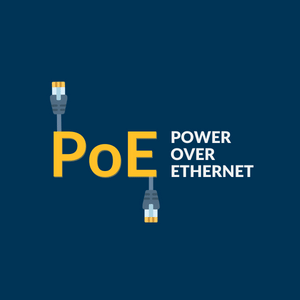How does PoE Work?
To be able to fully understand how Power is transferred over Ethernet, we would recommend that you have read and understood the “Ethernet cables: what are they and how do they work?” and “Power over Ethernet for industrial networks” blogposts.
Ethernet Cable basics
An Ethernet cable is made up of 8 cores, twisted in to 4 pairs. The data rate will depend how many of these 4 pairs are used for transmitting data. In a 100Mb cable, 4 cores are used, and in a 1Gb cable, all 8 cores are used.
A switch, router or the specific category of the cable will dictate the maximum date rate. This process is automatic and is important to know if you want to maximize the bandwidth of your network.

100Mb Ethernet cable
The basics of Power over Ethernet (PoE)
Power over Ethernet (PoE) is the transmission of Power from a Switch to a device that requires power, via Ethernet. This device could be an IP Camera, a Wi-Fi Access point, or something specific to your industry.
For these devices to operate, they need to be PoE compliant and connected to a device that can output the applicable PoE standard, either 802.3af or 802.3at, PoE or PoE+ respectively.
Transmission of Power over an Ethernet Cable
DC, or direct current, is the flow of electricity that PoE and PoE+ supports. To transmit power, specific cores pins are used, whilst the remaining pins transmit and receive the data.
Some PoE switches, like the Lynx-3510-PoE, support RJ45 Ethernet. Switches like the Viper PoE range that are made for an on-board railway environment use D and X-coded Ethernet cables. RJ45 and D/X-coded describes the cable connector and not the inner cable itself. Each cable consists of either 4 or 8 copper cores but differ by having different connectors. Ethernet cables can sometimes include shielding to ensure they are protected from external noise. What is important to understand when it comes to PoE, is that the same cores are not used on an RJ45 cable as on a D/X-Coded cable to transmit and received data or transmit power.
RJ45
RJ45 supports both 100Mb and 1Gb speeds. Pins 4, 5, 7 & 8 are used for power transmission, and pins 1, 2, 3 & 6 transmit and receive data.

1 Gigabit Ethernet cable
D- & X-Coded
A D-Coded cable has only 4 cores, and a X-coded cable has 8. This means that D-coded cables are limited to 100Mb, but an X-coded cable supports Gb and beyond. Regardless of the code, cores 1, 2, 3 & 4 are used in both D- and X-coded for both power transfer and data transfer. Since D-Coded only has four cores, the PoE standard enables power and data to be transmitted on the same cores.
Direction of power
In data communication, packets are either transmitted or received. Therefore, cables have an even number of cores, either using 4 or 8 transmit and receive. PoE, however, only transmits power one way.

Power being transferred over an Ethernet cable
Summary
Power over Ethernet enables end devices to receive power from a PoE enabled switch, regardless if the switch itself has either a RJ45 or D/X-Coded connector. Power only flows in one direction from the switch to the powered device and will do so utilizing either reserved or existing cores.
See also

Powerful industrial PoE switch
This industrial Power over Ethernet switch packs all the power needed and more for a vast set of applications.

What is PoE?
Wondering what benefits PoE switches offer in an industrial network? How smart is PoE, and what is the difference between PoE and PoE+? Find out in this blog post.
Carl de Bruin
International sales

Bitte nutzen Sie für Supportanfragen unser Support Formular
